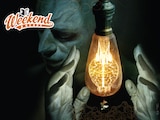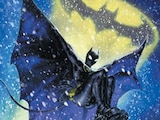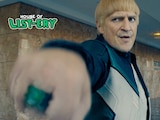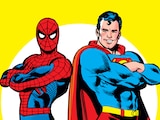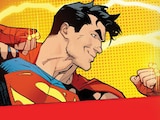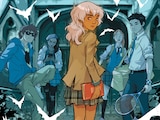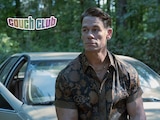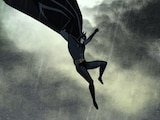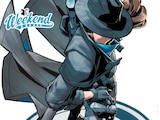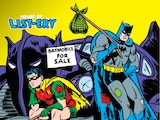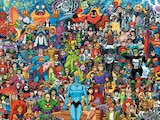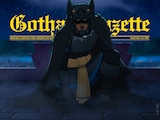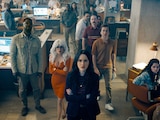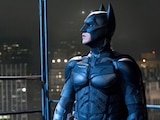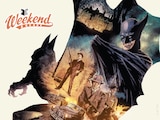Whether we saw it when it first aired or caught it much later on syndication or cable, for many of us, the classic Batman TV series starring Adam West and Burt Ward was the first exposure we had to the famous character and his equally famous rogues gallery. For others, it’s a fun, campy snapshot of 60s-era television as filtered through the lens of a classic super hero. No matter which camp you happen to fall into, one thing we can all agree on is that the Batman TV show is a blast from the past. No one ever expected to see it return with fresh stories.
However, with today’s digital debut of Batman ’66, the new comic book series based on the classic show, the world of West and Ward’s Batman returns in spectacular fashion. Even better, the team behind this highly anticipated new series isn’t content to simply bring this distinct version of Gotham to the present—they’re taking it into the future with DC2, the next step in digital comic evolution from DC Comics. As the first series to receive the DC2 treatment, Batman ’66 is blazing new ground for the character, much like the series did when it first debuted.
We were curious about what we could expect from Batman ’66 as well as the new digital endeavor that it’s kicking off, so we spoke to some of the folks involved with us. Writer Jeff Parker and artist Jonathan Case answer some questions about Batman ‘66, while series editor Jim Chadwick tells us a few things about DC2.
First up, Jeff Parker and Jonathan Case…
Guys, the Batman ’66 comic has generated a lot of talk and anticipation since it was first announced, but now that the first chapter’s about to be released, what should readers expect?
Jeff Parker: They should be ready to enjoy themselves with the most glowing bright version of Batman possible. But I think they'll also be surprised that we're not just going for funny, there are real thrills and mysteries and character development for them. I'm very eager to see how longtime fans react, and to hear if their children read it too.
Jonathan Case: I think we've been able to create something that feels fresh and fun, along with mining some of the best parts of the TV show. There's a sense of optimism and playfulness here that's made it really enjoyable as a comics creator. Everyone's having a good time, and hopefully that enthusiasm comes through for readers. I bet it will.
Is each chapter a complete story? Or will there be multi-part storylines?
JP: There are multiple parts, a lot like the way the show would do. Usually two-part stories ten pages apiece with ten-page backups in the print comic. But our first one starts with a big thirty-page story.
How effectively does the comic capture the feel of the show?
JP: I'm probably too close to it to say, but when I've let a few cartoonists read it secretly, they all said they hear the actors' voices in their heads!
JC: Jeff hits it right on the money in terms of the characters' voices. Our perceived budget is also much larger than show could have ever managed, because, comics. You'll see the familiar material and characters brought to life in new ways.
What can fans look forward to in future installments? Who are some of the villains we’ll be seeing?
JP: Julie Newmar Catwoman! Penguin teaming up with Mr. Freeze, which is the most perfect pairing in the world, to me. The Siren ruins Bruce Wayne's date! You get the sense that Gotham City is the most hopping place on the planet in our book.
With an idea of what we can expect from the series, we asked Jim Chadwick what we could expect from DC2.
What is DC2 and what does it mean for Batman ’66?
DC2 is the next phase of our digital comics initiative. Up until this point, our digital comics have been more or less static experiences, allowing you either to view an entire page or take a panel-by-panel, guided view of a page. This has been true whether it's been a comic that originally appeared in print and has been converted to digital, or one of our original, digital first comics, even though the latter are formatted in ways that are specific to the digital platform.
With DC2, the experience now becomes a more interactive one. You will not just scroll through static panels, but things will actually happen while you do so. A single panel—or more appropriately, a "frame" in this case—may have two or more iterations, which will give readers an nice visual surprise as they tap their way through the story.
How does DC2 differ from animation?
It was very important to us that no one mistake this for limited animation or motion comics. The effects are more of an enhancement to the reading experience, rather than being the focus in and of themselves. Things will not be moving or popping on and off every single frame. But when they do happen, they will happen in a way that's logical to the story and that will hopefully give readers a fun, visual surprise.
What new storytelling avenues does something like DC2 open up that you wouldn’t have in a traditional comic?
Batman '66 has been a unique and exciting challenge. Both writer Jeff Parker and artist Jonathan Case have had to think differently. Because of our backgrounds, we start thinking about how this will all work on a finished, static comic book page. But then we have to blow that all apart and build it back together, thinking of what fun variations we can make that would only work for digital. While Jonathan has had to carry the lion's share of the effort—he's really been our designated trailblazer for this—it's really been a collaborative effort. There's a lot of back and forth that's gone on here, trying to get things just right. Pacing has always been a big concern for both the creators and myself. You sometimes have to stop yourself from going overboard with all the tricks you can do because in the end we want it to be as fun and as seamless a reading experience as possible, and you don't want to bog down the reader with too many gimmicks. In the end, these are still comics, after all.
Why did you choose Batman ’66 as the first chapter to get the DC2 treatment?
It was an obvious fit for a couple of reasons. For one, we wanted to debut DC2 with a big, tentpole project. Even if we were doing Batman '66 as just a print comic, or even one of our regular, original digital first comics, we knew it was going to get a lot of attention. We were getting a huge amount of buzz and goodwill towards this property months before anyone knew it was also going to be how we would introduce DC2 to the world. So now the two more or less feed off of each other.
The other reason is just the nature of the property. Ironically, we're going high tech with a very retro series, but it works. The show was known for its visual inventiveness and really rewrote the rules for how to make and shoot a TV series back in the 60s. So we're employing a lot of the exaggerated actions and—of course—crazy, screen filling sound effects that the original show was known for.
You can check it out for yourself by downloading the first chapter, which is now available in the DC Comics Digital Store.

